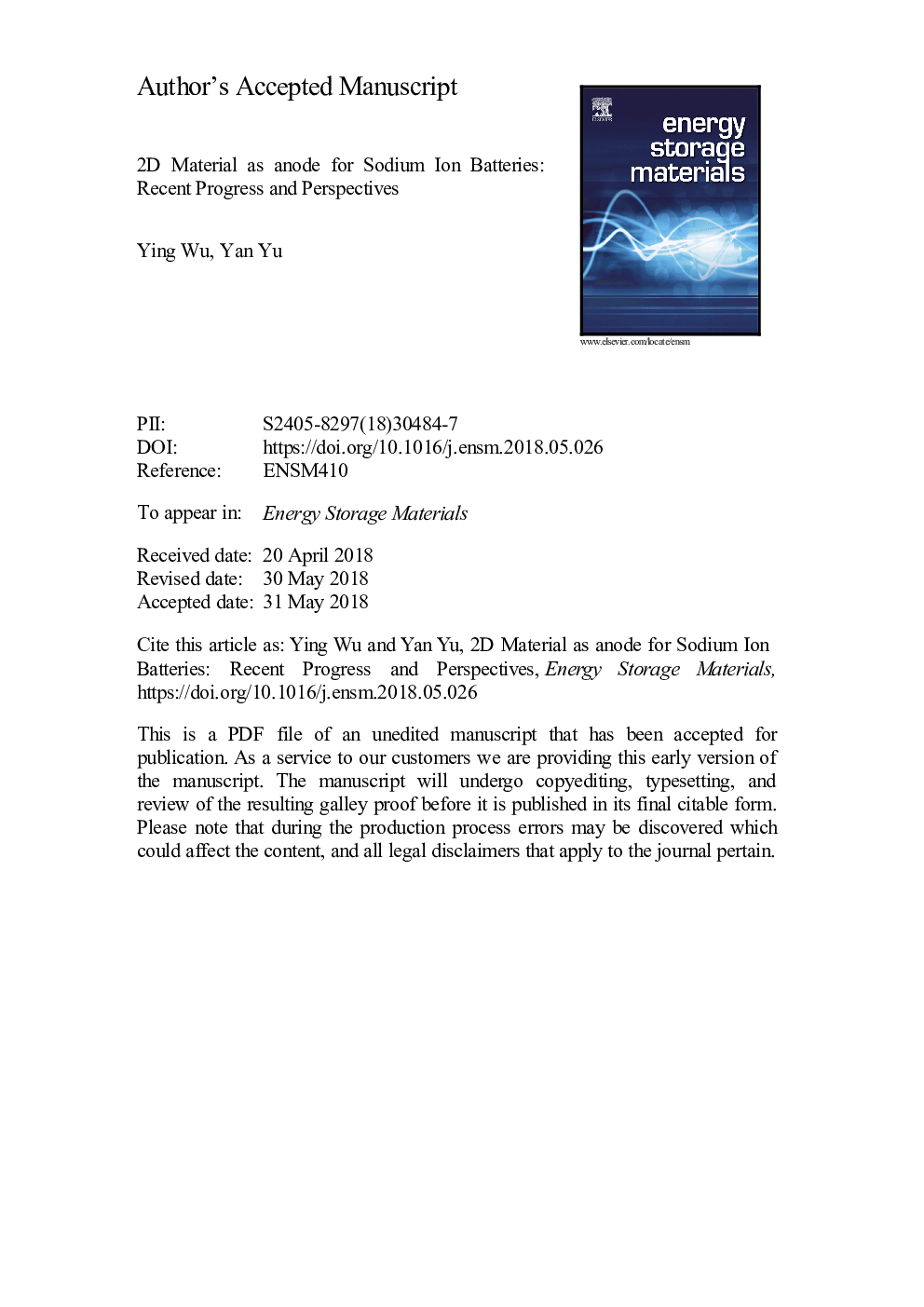| Article ID | Journal | Published Year | Pages | File Type |
|---|---|---|---|---|
| 7962282 | Energy Storage Materials | 2019 | 65 Pages |
Abstract
Sodium ion batteries (NIBs) have attracted extensive attention recently and been regarded as a promising alternative to lithium ion batteries (LIBs) meeting the demands of large-scale electrical energy storage systems. Both LIBs and NIBs show similar working principal that is based on the “rocking-chair” mechanism. However, the electrode materials match well with lithium ion batteries are not suitable for the NIBs system due to the large diameter of Na+ (0.98â¯Ã
) than that of Li+ (0.69â¯Ã
). Two-dimensional (2D) materials have gained great progress in recent years served as anode materials for NIBs with unique 2D layered structure, infinite planar lengths and much exposed active sites, which confirms to be a promising alternative anode material for NIBs. In this review, we summarize the recent progress in the synthesis and application of the 2D materials including graphene, phosphorene, MoS2 and MXenes in NIBs and the relationship between structure and electrochemical performance. We also offer some insight on the future perspectives of the improvement on sodium storage performance of such 2D materials.
Related Topics
Physical Sciences and Engineering
Energy
Fuel Technology
Authors
Ying Wu, Yan Yu,
